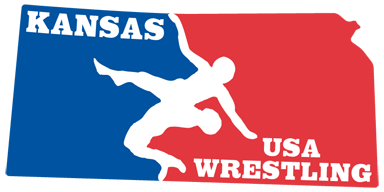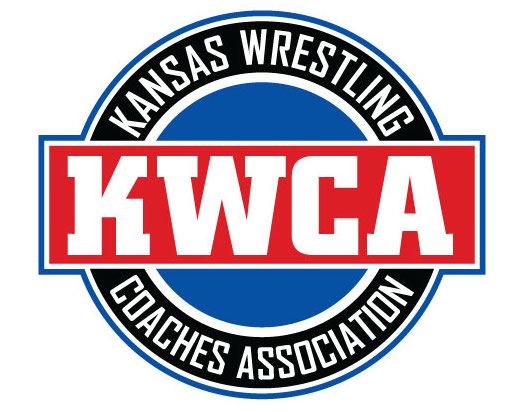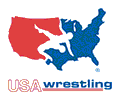By Rick Peterson
rick.peterson@cjonline.com
EDITOR’S NOTE: Kansas State High School Activities Association executive director Gary Musselman, who is currently serving a one-year term as president of the National Federation of State High School Associations, recently sat down with Topeka Capital-Journal high school writer Rick Peterson to discuss issues dealing with high school activities. This is the second in a three-part series.By Rick Peterson
As the start of the 2016-17 school year looms next month, Gary Musselman has a list of priorities and concerns he would like to see the KSHSAA tackle, or continue to move forward on, in the coming year. Here is a look at five topics at the top of his list:
STUDENT SAFETY
This is nothing new, but safety has been a subject that has received a lot of recent attention with emphasis on reducing concussions as well as stepping up regulations concerning arm safety in baseball.
“I think the top of our list of concerns always, and it’s a never-ending concern because it’s a process you’re never done with, is trying to reduce and minimize risk for kids to participate,’’ Musselman said.
The KSHSAA and National Federation continue to search for ways to reduce concussions, with Musselman representing the National Federation board in a special task force on the subject.
“That led to some significant changes and I’m not sure we’re done,’’ Musselman said. “We’re in a better position than we were a couple of years ago. Last year phasing those (changes) in went very well because our coaches were wonderful. They really bought in.
“We had a meeting and we had 389 years of football coaching experience there – Eight-Man to 6A. And what pleased me to no end was there was no pushback at all.’’
Another hot-button subject in Kansas is arm care in baseball, particularly after it was discovered that multiple schools exceeded established pitching regulations for innings pitched in a game during the 2016 playoffs.
Officials are now considering regulations for pitches thrown instead of innings pitched after meeting with coaches. The KSHSAA started collecting data on the subject last season.
“(The high school regulation) is going to be real close to, if not exactly, what USA Baseball, based on their sports medicine research, says is right for this age group,’’ Musselman said. “Then you’ve got a rule people can accept. Then you’ve got a rule that’s going to take better care of kids. That’s the priority for the National Fed and for Kansas.’’
All indications are that a new arm-care rule will be in place for the ’17 season.
“We’re now into the phase where probably within this year before baseball season, and it could be as early as September, we’ll put a rule in front of our board and say, 'OK, here it is,’ because we need to get something on the books so that people can start planning for the season to come,’’ Musselman said.
PROTECTING HIGH SCHOOL ACTIVITIES
Most athletes, parents and coaches assume prep activities will be around forever, but Musselman sees some trends that have him concerned for the future.
“I think our second priority, which is really important given circumstances in Kansas with school funding and finance, is we’ve got to make certain that our programs across the country, not just Kansas, do not lose their status and their existence in the school setting,’’ he said. “There is so much gravitation toward pay-to-play club, AAU. Pick your sport and there’s some major private enterprise making serious, serious money off of parents and kids.’’
Musselman worries that some non-high school coaches are encouraging athletes to get out of high school athletics by pitching the notion they will have a better chance of getting a college scholarship if they concentrate on club-type sports.
He also worries that some of those coaches are also putting pressure on athletes “to specialize on (one) sport 365 days a year.’’
“That takes you right back to the medical concerns issue,’’ Musselman said. “Just like baseball overuse as far as number of pitches thrown, a kid who specializes in a sport year-around and does nothing else but wrestle or soccer or volleyball is a kid who is at risk for injury specific to that sport.
“When kids played multiple sports they were cross-training, before we knew what cross-training was called. We just did it naturally so muscle groups and joints that were used in a fall sport might be different in a winter sport, might be different in a spring sport.’’
Musselman said the KSHSAA has the student-athlete's best interests at heart.
“Our job is not just to do (what we do) for safety and health of kids but literally to preserve the opportunity for kids to still play for their school,’’ he said. “There’s been so many examples that kids play high school because they want to have fun, they want to be with their friends. That doesn’t duplicate in the elite club setting.
“And what do you do if you’re a kid and you don’t have finances to get private coaching, private lessons and pay the money it takes to play at a high-level, elite club? We’re trying to keep programs funded, viable and available for kids because we risk too much if we don’t do that.’’
COMPETENCY OF COACHES
As important as it is to Musselman that the KSHSAA and National Federation continue providing opportunities to students, he also wants to do whatever can be done to ensure that students are getting the best coaching/guidance possible.
“The competency and the professionalism of coaches and the personnel who work with them is always a priority,’’ Musselman said.
Musselman said Kansas offers a variety of clinics and rules meetings to make sure coaches understand what is expected of them and help them grow as coaches.
Along those lines, coaches are asked to take yearly online classes dealing with concussion and heat/hydration education offered by the National Federation.
RECRUITMENT/RETENTION OF OFFICIALS
Musselman said the KSHSAA needs to step up its efforts to attract and retain officials.
“That’s for all sports; that’s even true in our fine arts areas,’’ he said. “I think the hard part is our officiating pool ages and we don’t infuse as many young ones as we exit out those people who age out and decide it’s time (to retire). It’s a process and you’re never done with it.
“Right now we’re providing a scholarship to any new, first-year official that’s recommended through one of our area supervisors or a commissioner. It might be a high school graduate. It might be a person who’s a year or two in college. We’ll give them a free registration the first year and connect them with a mentor and try to get them through that first year or two because that’s the point you either lose them or them may stick with you.’’
RE-CLASSIFICATION
As Kansas has grown to eight classes in many sports, re-classification has been a major topic of discussion.
“Kansas is absolutely no different than all other states,’’ Musselman said. “Every other state in the country is working through this issue of, 'How many classifications or divisions are enough? How many are too many?’ "
The KSHSAA has assembled the Classification Study Committee that continues to work towards a possible re-vamping of classifications in the state.
“We’ve had a committee of 13 men and women that have been meeting all of the school year,’’ Musselman said. “That committee was put together very intentionally to make sure we included all classifications we have and all the geographical areas of Kansas, rural and urban.’’
Musselman thinks the committee could have a proposal ready this fall.
“When they come up with a proposal, what they want to do with it is take it out to the fall regional meetings where everybody can really hash it over good and talk about the pros and cons,’’ he said.
“I guarantee not everybody will like it, whatever it will be, and it may be that we don’t change much. It’s a very deliberate process.’’







